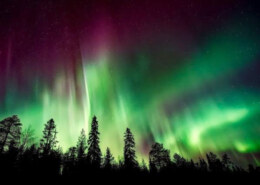Components & Working: A Tsunami Warning Centre operating on 24x7 basis. A network of land-based seismic stations for earthquake detection. A network of 12 Bottom Pressure Recorders (that could detect and measure a change in water level of 1 cm at water depths of up to 6 km of water). A network oRead more
Components & Working:
A Tsunami Warning Centre operating on 24×7 basis.
A network of land-based seismic stations for earthquake detection.
A network of 12 Bottom Pressure Recorders (that could detect and measure a change in water level of 1 cm at water depths of up to 6 km of water).
A network of tsunami buoy system it measures the change in height of the water column then this water column height is communicated and then relayed via satellite to the tsunami warning center.
Real-time observational network for upper ocean parameters and surface met-ocean parameters.
A network of 50 real time tide gauges, radar- based coastal monitoring stations and current meter moorings to monitor progress of tsunami and storm surges .
The EWS receives real-time Seismic data from the National Seismic Network the system detects all earthquake events of more than 6 Magnitude occurring in the Ocean . BPRs installed in the Deep Ocean and Buoys are the key sensors to confirm the triggering of Tsunami through INSAT end-to-end communication takes place and disseminate alerts to MHA by satellite- based virtual private network (VPN DMS). This network enables early warning center to disseminate warnings to the MHA, as well as to the State Emergency Operations Centers.


Weathering is a natural process involving the decomposition of rocks and minerals into smaller particles through physical, chemical, and biological means. It plays a very indispensable role in reshaping the Earth's surface and as a source of soil. There are mainly three types of weathering: physicalRead more
Weathering is a natural process involving the decomposition of rocks and minerals into smaller particles through physical, chemical, and biological means. It plays a very indispensable role in reshaping the Earth’s surface and as a source of soil.
There are mainly three types of weathering: physical or mechanical, chemical, and biological.
Physical Weathering: Also known as mechanical weathering, it is the breakdown of rocks into smaller pieces without bringing about chemical changes. The main involved processes include:
Freeze-thaw cycles: Water infiltrates into the fissures of rocks, freezes, expands, and finally causes the rock to break apart.
Exfoliation: Pressure release brings about peeling away of the outer layers from rocks; it mostly happens in a dome-shaped manner.
Abadian: Wind, water, or ice carry particles that rub against rock surfaces, wearing them away.
Weathering by Chemical Methods: It is the process by which the minerals in rocks are changed by chemical reactions with water, air, or other chemicals. The major processes here include:
Hydration: Water molecules are incorporated into the mineral structure; they enlarge it and, therefore, weaken it.
Hydrolysis: Minerals combine with water to produce new minerals that are softer, more susceptible to be further broken down—for instance, the breakdown of feldspar into clay.
Oxidation: Oxygen combines with minerals, heavily the ones containing iron; as a result, rusting occurs and, therefore weakening of that rock, for example, iron turning to iron oxide.
Carbonation: Carbon dioxide, which is dissolved in water, forms carbonic acid by reacting with water. Carbonic acid reacts with the minerals, mainly calcite in limestone, that has the capacity to dissolve them.
Biological Weathering: Organisms play a role in the weathering process of rocks, both physically and chemically. Trends of note include :
Root expansion: Plant roots expand in rock cracks and apply pressure to them, eventually breaking the rock. Growth of Lichen and Moss: These organisms produce acids which in turn etch, or chemically wear down, the surface of the rock.
See lessDifferent forms of weathering have different effects on rocks. Physical weathering increases surface area for chemical reactions, thereby increasing chemical weathering. Chemical weathering of rocks changes their mineral composition, so enhancing their possibility of being broken physically. Biological weathering breaks them further by both mechanical and chemical methods. All these processes combine to constantly change the face of the Earth.